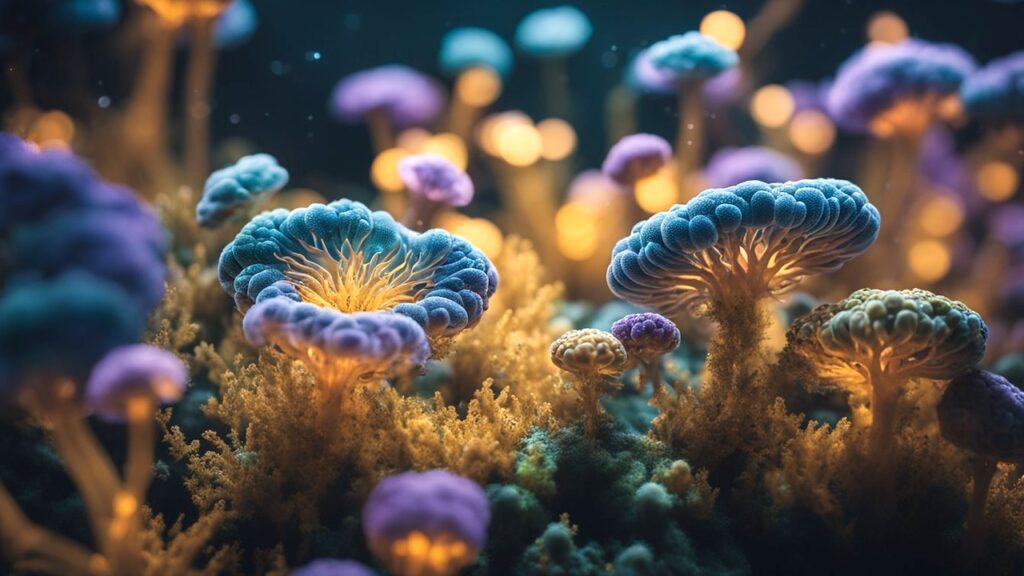Living in Florida, you’ve no doubt heard of mold and mildew.
But there’s another related byproduct you should be aware of, called mycotoxins.
Mycotoxins are harmful chemicals that some molds let off as they grow.
(Quite similar to the gases or sweat that our own bodies produce, except that for molds, their byproducts are toxic.)
If you “smell mold” in your house, you are very likely actually smelling VOCs—volatile organic compounds—which often indicate mycotoxins might also be present.
Fifty times smaller than the smallest mold spores, mycotoxins themselves have no smell or taste and are virtually invisible, but the smell of dampness, musk, or a “wet forest” or “old house” smell is often the 1st sign of a mold problem.
Mycotoxins aren’t at all good for you, which is one of the many reasons that once you suspect you’re smelling mold, you should stop agressively “sniffing out the mold” and get your home tested or treated for mold quickly.
Hurricanes Helene and Milton, and the Effects of Water Damage
We’ve seen the utter and heartbreaking devastation caused by hurricanes Helene and Milton as we’ve gone from home to home in the Tampa Bay area and helped with dry-outs, water damage remediation, mold prevention and mold removal.
So we know what many of our friends locally are already dealing with.
That’s why we want to remind local families about not just mold, but mycotoxins.
If your home was hit by some part of Helene or Milton or has suffered from other past water damage, leaks, or flooding, there is a good chance that mold might be present.
And with many molds come mycotoxins.
“As molds grow, some (but not all) of them may produce potentially toxic byproducts called mycotoxins under some conditions. Some of these molds are commonly found in moisture-damaged buildings. More than 200 mycotoxins from common molds have been identified, and many more remain to be identified. The amount and types of mycotoxins produced by a particular mold depends on many environmental and genetic factors. No one can tell whether a mold is producing mycotoxins just by looking at it.“
— U.S. Environmental Protection Agency (EPA), last updated by EPA on January 2, 2024

Mold is a fungus
Mold is a type of fungus that thrives in moist, warm environments and can grow on a number of surfaces, from wood, to drywall, and fabric. Mold reproduces by releasing tiny spores into the air, which can then settle and grow in new areas if conditions are right.
Mycotoxins are toxins made by mold
Mycotoxins are toxic compounds naturally produced by certain types of mold. Not all molds produce mycotoxins, but those that do can pose series health risks. We don’t share this to scare, but to inform, and if you’re wondering whether you specifically might be being impacted by either, we invite you to browse the comphrensive list of possible health effects, here.
These effects—from asthma-like symptoms to nose/throat irritation—can be caused by molds that produce allergens or pathogens, or (worse) by molds that produce mycotoxins. Some molds product all three—allegens, pathogens, and mycotoxins.
Like mold, mycotoxins can also become airborne and can be inhaled, or they can contaminate surfaces and materials, leading to potential ingestion or skin contact.
“Of the thousands of molds that exist, some are known allergens (aggravating or causing skin, eye, and respiratory problems), and a few molds produce harmful mycotoxins that can cause serious problems. But all molds, in the right conditions and high enough concentrations, are capable of adversely affecting human health.”
U.S. Federal Emergency Management Agency (FEMA), “Dealing With Mold & Mildew in Your Flood-Damaged Home“
Relationship Between Mold and Mycotoxins
Mycotoxins are secondary metabolites produced by specific mold species.
This means that mycotoxins are a byproduct of the mold’s metabolic processes.
Some studies suggest mycotoxins are a defense mechanism of molds that prevent other molds from encroaching on their conquered territory.
That’s why mold is best removed right the first time, and not stirred up or “attacked” by people who aren’t prepared to deal with it fully. People who already have compromised immune systems for example should never deal with mold, nor should women who are pregnant or nursing, or people who are elderly.
(And these same groups of people should have mold treated quickly for the same reason—they’re at the greatest risk of experiencing the effects of mold.)
While mold itself can cause health issues, such as allergic reactions and respiratory problems, mycotoxins add another layer of risk due to their toxic nature.
Differences Between Mold and Mycotoxins
- Mold is a living organism; mycotoxins are chemical compounds.
- Mold can cause health issues like allergic reactions and respiratory problems. Mycotoxins can lead to more severe health issues, including neurological problems and immune system suppression.
- Mold can often be seen and smelled making it relatively easier to detect. Mycotoxins are invisible and odorless, requiring specialized testing for detection.
Why This Matters to Florida Homeowners
As a Florida homeowner or resident, you should know:
- That mycotoxins can be more harmful than mold spores alone
- That simply removing visible mold may not be enough if mycotoxins are present.
- That proper mold remediation involves not just removing the mold but also addressing the conditions that allowed it to grow in the first place—fixing leaks, improving ventilation, and using proper cleaning to ensure mycotoxins are also eliminated as much as possible.
- That mold can grow in as little as 24-48 hours after a flood, storm, or hurricane in water-damaged homes.
- That Florida’s humidity alone is enough to support mold growth.
If you suspect mold or mycotoxin contamination in your home, please reach out to us at Mold Solutions.







